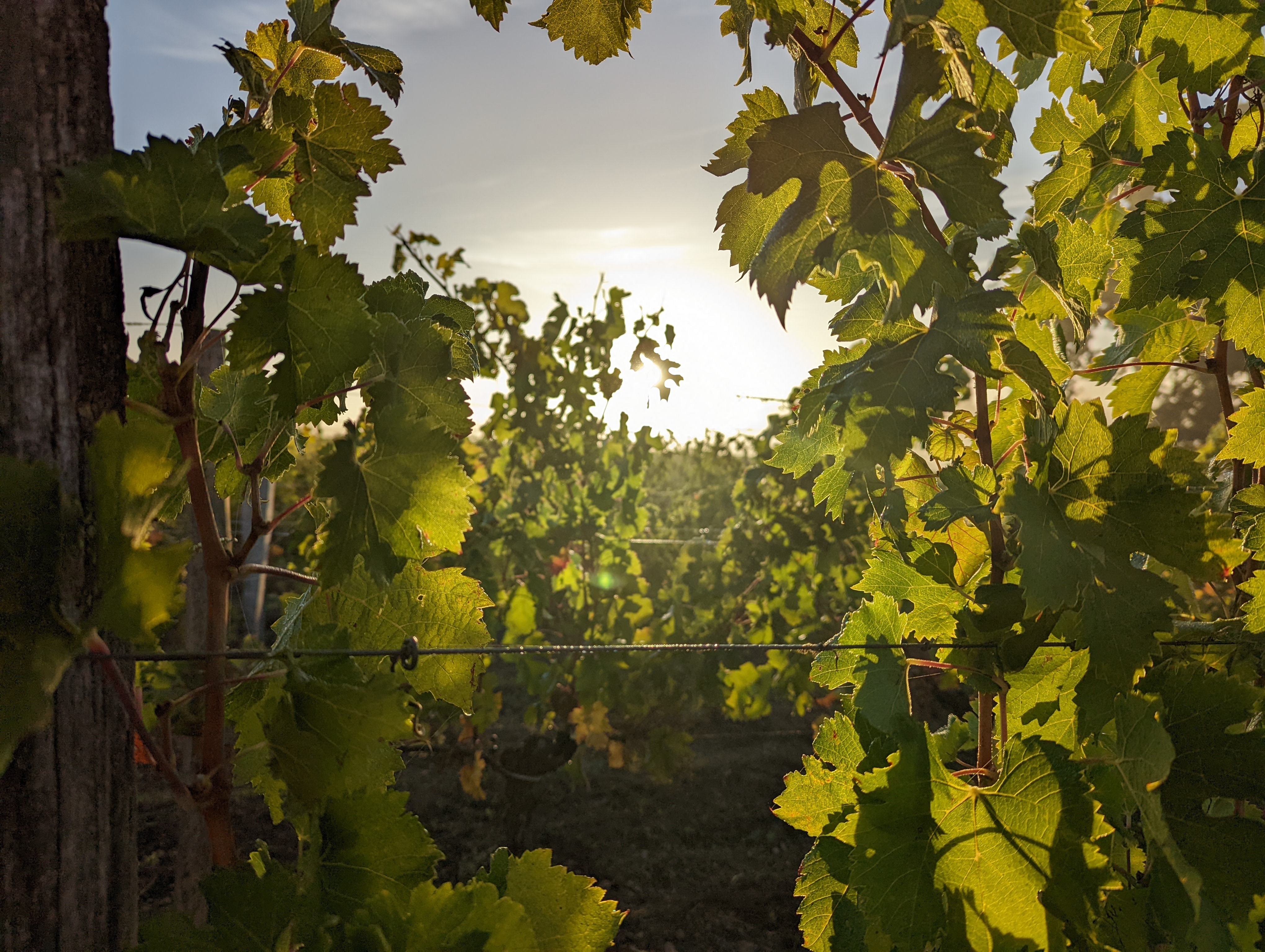The vine's winter cycle
The switch to winter time has taken place. Temperatures are dropping and autumn is settling in inexorably. Evenings in front of the fireplace are becoming more attractive and recurring. Outside, animal species disperse, some hibernating, others migrating to escape the rigors of a climate unfavorable to the abundant availability of food. In the vineyard, after the harvest, a delicate period begins for the vines: the vegetative rest period from November to March. What really happens during these five months?
Dormancy
Winter is synonymous with a period of dormancy for the vine. The leaves take on warm, shimmering colors before falling off, the sap sinks into the roots, and the vine falls asleep until its next vegetative cycle. This resting period, from December to March, means that no photosynthesis takes place until next spring.
The leaves
@Stéphane Klein
With the end of the harvest and the arrival of autumn, the leaves on the vines are subjected to three phenomena:
– migration of the last reserves into the wood. The majority of carbohydrate (sugars, starch) and nitrogen (protein) reserves are produced by the vine throughout its cycle, and stored at the end of the cycle in the wood and roots. These reserves are quickly put to use to combat the extreme climatic conditions of winter. The vine's springtime start-up is highly dependent on the reserves stored during the previous year. It therefore requires the winegrower to anticipate nutritional needs: planting cover crops to produce biomass, combining biostimulants and nutrients.
– the destruction of chlorophyll. It is an abundant pigment in leaves throughout their growth phase, and is involved in photosynthesis, which transforms light energy into chemical energy and ultimately organic matter. In autumn, as temperatures drop and light levels fall, chlorophyll begins to break down during senescence. As a result, most of the green color is no longer reflected by this pigment.
–the development of cork at the base of the petiole. Once all the precious elements have been stored, a cork plug forms at the base of the petiole, creating scars. This cork blocks the leaf's water supply and forms a rupture zone. The slightest puff of wind is enough to cause the leaf to fall, as it is no longer supplied with water. The cork that remains at the base of the petiole also protects the vine from bacterial and fungal attack.
Winter vineyard work
Don't be fooled by the gentle silence of winter in the vineyards: the winegrower combines the winemaking and aging of his wines with vineyard maintenance. Winter work in the vineyard can begin in preparation for the next season.
Mulching
To protect the vines from frost, the winegrower can choose to cover them with an organic cover: this is called mulching. Under-row mulching is also used as an alternative to chemical or mechanical weeding. A second layer of mulch under the row in March can be considered by the winegrower to compensate for the compaction that occurs over the weeks. A mixture of different species in the mulch will bring a certain diversity to the humus produced.
Pruning the vines

When temperature drops below 10°C (50°F), the vine slows down. Since vines are lianas, they tend to grow in an anarchic manner. So it's best to take advantage of winter, when the vine is dormant and sap is no longer circulating, to start pruning. The winegrower prunes the vine in preparation for spring flowering. Generally speaking, pruning takes place in January and February, depending on the region and the severity of the climate. Vine pruning is specific to each winegrower and region. Each region, depending on its grape variety, density of vines per hectare and many other factors, will adopt a different type of pruning. At Château La Rose Perrière, we have opted for double Guyot pruning. The aim of pruning is to encourage the emergence of new shoots to renew the fruit-bearing branches.
In fact, the grape bunches will form on this year's wood. During this phase, therefore, the winegrower will concentrate on the shoots of the past year.
The fall or drawing of the woods

Once the vines have been pruned, it's important to remove all remaining pieces of wood so as not to interfere with the plant and machinery. The wood removed is crushed and returned to the soil to provide it with nutrients. This gradually feeds the topsoil layer. An alternative to shredding is to gather the wood into bunches of shoots, which are then used to fuel the fire for grilling.
Carassonnage
"Carassonnage", or "secaillage", involves checking and maintaining the stakes and wires used to support the vines between the moment when the pruned shoots are dropped and the moment when the ones saved for the next harvest are tied up.
Overhauling this entire installation is essential to support the vine and keep it healthy during its development: iron wires cut during pruning are repaired and re-tensioned, and acacia posts, also known as "caraçons", are replaced when broken.

What about in the southern hemisphere ?
Logically, the vine cycle in the southern hemisphere is reversed. October-November is the development period: shoots grow rapidly until the vine flowers. At the end of December, the grapes set and the first berries appear. From January to March, the berries develop, followed by veraison and ripening. Grape skins change color - red grapes turn red and then purple, while white grapes become translucent and golden.
As you can see, there's no such thing as a winter truce for the winegrower who, like a livestock farmer, has to look after his vines, protect them, nurture them and prepare them for the spring awakening phase throughout the winter months.



